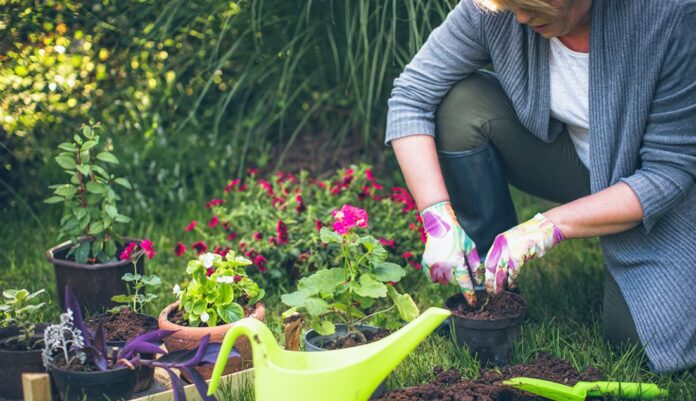Vegetables aren’t the only foods that you can grow successfully in your backyard, fruits also provide vitamins and nutrients that work together to keep our bodies healthy and strong. Keep in mind that you don’t have to own a large piece of land to grow a wide variety of fruits. Everything you need is a little bit of time, planning, deer fencing and maintenance, and you can create a vibrant fruit garden that will produce a robust harvest you will be proud of. From summer’s sweet strawberries to fall’s crisp apples, there’s nothing quite like biting into a piece of fruit that you grew yourself.
Here are a few tips we collected for the first time fruit gardeners:
Selecting the Garden Area
Fruit needs a lot of sun exposure to grow strong and healthy, so when selecting a proper fruit garden site it is essential to choose a spot that receives a minimum of six hours of sunlight. Too much shade won’t necessarily kill your plants, but it will make them less fruitful. If your yard has shadier spots that only receive partial sun, utilize them by growing fruits that can tolerate those conditions such as rhubarb, plums, currants, kiwis, and pears.
Loamy soil is a must, as fruit plants hate having wet feet. They should be located where there is good air circulation so their leaves will dry quickly since moisture helps spread disease. If you don’t have well-drained soil in your backyard, buy a few bags of it at your local home improvement store.
Determining the proper direction of the slope is a bit more complex. Southern and southwestern slopes can be hot and dry and can cause trees to break dormancy too early, which makes them susceptible to damage from late frosts. A southern slope can work well if it is protected from the prevailing winds by a windbreak on any side except the down-slope one – which would block air circulation. A northern slope may not provide enough solar exposure to evaporate moisture and promote good fruiting. In humid regions, easterly slopes can speed up the drying of the morning dew.
What to Grow
Make a mixture of annual and perennial plants for the best overall sustainability in your fruit garden. In order not to harvest all of the fruits in your garden at the same time pay attention to the fruit harvest times and vary them in your garden. Choose a balanced mix of early, mid, and late-season varieties.
Watermelons, cantaloupe, pineapple, strawberries, grapevines, kiwis, kumquats, oranges, lemons, limes, raspberries, blueberries, blackberries, peach pear apple trees, cherry trees, and mango trees, are all great options for your fruit garden depending on your grow zone.
It would be smart to start with fruits that are not hard to maintain. A great example of that are strawberries. Being easy to grow makes them great for beginner gardeners. They can grow in pots or in the ground, and they are a quick producing plant that needs little room.
Seek out trees and shrubs that have some natural resistance to disease. In apples and pears, common diseases include scab and fire blight. With other fruits, such as raspberries, make sure you buy from a nursery that propagates from virus-free plants. Selecting disease-resistant plants doesn’t mean that you will never experience any disease problems, but it greatly improves your chances for success.
Then there is the issue of hardiness. To make sure that the plants you purchase won’t be damaged over the winter, check hardiness information before you buy. Also consider bloom time. Many fruits flower very early in the spring. If your area is prone to late frosts, such early bloomers may survive, but they will never truly thrive or reliably set fruit. In order to grow these plants in a marginal area, you’ll have to plant them in an especially favorable and protected site.
Soil Composition
Fruits thrive best in nutrient-rich, well-draining soil, so make sure that your garden soil is amended with rich organic matter and well-decomposed compost.
When it comes to pH, the ideal acidity level significantly varies between different fruit varieties. It is best to test your soil and check your plants for their individual pH needs. You can group plants with similar pH parameters together and amend the soil in each bed according to their specific requirements.
Remember to Start Small
In the end, let’s remember the most basic thing: it’s better to be proud of a small garden than to be frustrated by a big one. When the urge to start your own garden strikes, it may be tempting to transform your entire backyard into a miniature fruit farm, but that can be too much work for first-time gardeners. Pick a small piece of land and start out with growing one type of fruit. Once you’ve got the hang of that one, expand and start growing other kinds of fruit. One morning you will wake up and you will have a rich fruit garden that you are proud of.






